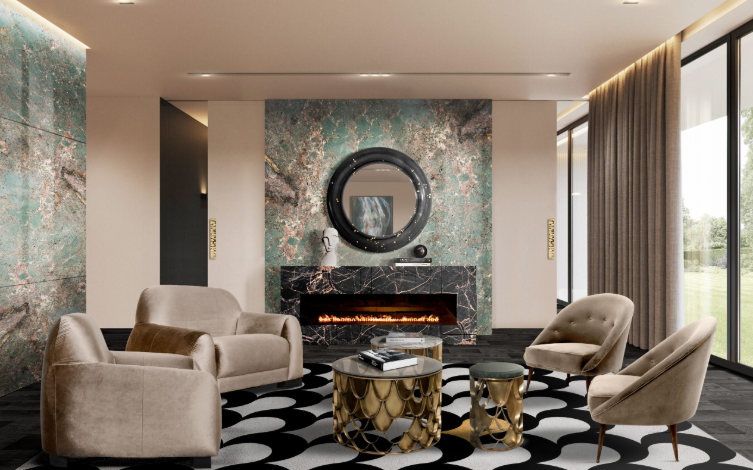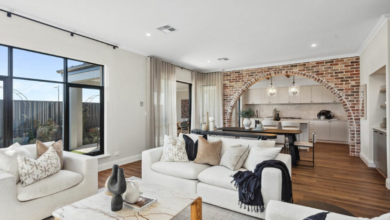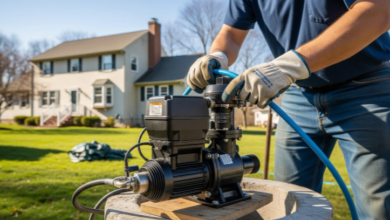Transforming Spaces: Innovative Ideas for Interior Design House

Creating a home that reflects personality, style, and functionality is the essence of a well-planned interior design house. In today’s world, homeowners seek spaces that not only look aesthetically pleasing but also serve practical needs. Interior design is not just about arranging furniture; it is about creating a harmonious environment where comfort meets creativity.
Understanding the Basics of Interior Design House
The first step in planning an interior design house is understanding the fundamentals of design. Colors, textures, lighting, and space planning are the cornerstones of any successful project. For instance, light colors can make a room feel larger and more open, while darker shades bring warmth and coziness. Textures, such as wood, metal, and fabric, add depth and character to a space.
Lighting plays a critical role in highlighting key areas and creating moods. Natural light is ideal for making rooms feel airy and fresh, whereas artificial lighting helps accentuate specific design elements. Proper lighting in an interior design house can transform ordinary spaces into captivating areas.
Planning Functional Spaces
Functionality is as important as beauty when designing a house. Every room should have a clear purpose and layout that supports its intended use. In an interior design house, open floor plans are popular for living and dining areas, promoting interaction and flexibility.
Consider the kitchen, which is often the heart of a home. Incorporating storage solutions, ergonomic layouts, and durable surfaces ensures that the kitchen is not only attractive but also practical. Similarly, bedrooms should focus on relaxation, with layouts that support rest and personal comfort.
Choosing a Style That Reflects Personality
A successful interior design house embodies the personality and lifestyle of its occupants. Whether one prefers modern minimalism, rustic charm, or classic elegance, choosing a cohesive style is crucial. Modern designs emphasize clean lines, neutral colors, and minimal ornamentation. Rustic styles highlight natural materials and warm, earthy tones. Classic designs, on the other hand, incorporate symmetry, rich textures, and timeless furniture pieces.
Mixing elements from different styles can create a unique and personalized interior design house. For example, pairing vintage furniture with modern lighting fixtures can add character and individuality to the home.
See also: How Real Estate Trends Are Shaping Home Selling Decisions in Today’s Market
Incorporating Sustainable and Eco-Friendly Choices
Sustainability is becoming increasingly important in interior design house projects. Using eco-friendly materials, such as reclaimed wood, recycled metal, and low-VOC paints, reduces environmental impact while enhancing the home’s aesthetic appeal. Energy-efficient appliances and smart lighting systems also contribute to a sustainable living environment.
Sustainable design not only benefits the environment but also promotes healthier living. Natural materials and proper ventilation improve indoor air quality, creating a more comfortable and safe home environment.
Utilizing Color Schemes and Patterns
Color schemes and patterns are powerful tools in interior design house projects. A well-chosen color palette can evoke emotions and set the tone of a room. For instance, cool colors like blue and green create a calming effect, while warm colors like red and orange energize the space.
Patterns, whether through wallpapers, rugs, or textiles, add visual interest and depth. Mixing subtle patterns with solid colors can create a balanced and engaging environment. In an interior design house, colors and patterns should complement the overall theme and purpose of each room.
Integrating Technology for Modern Living
Technology has become an integral part of contemporary interior design house projects. Smart home systems, including lighting, security, and climate control, enhance convenience and efficiency. These technologies can be seamlessly integrated into the design, ensuring they complement the aesthetics of the home.
For example, automated lighting systems can adjust brightness according to the time of day, while smart thermostats maintain comfortable temperatures efficiently. Incorporating technology in an interior design house allows homeowners to enjoy a modern, connected living experience.
Creating Personalized Spaces
Personalization is key to making a house feel like a true home. Displaying art, family photos, and meaningful collectibles helps reflect the homeowner’s personality. In an interior design house, these elements can be incorporated through galleries, shelves, and accent walls.
Custom furniture and built-in storage solutions also contribute to a personalized environment. Tailoring spaces according to specific needs, such as reading nooks, home offices, or entertainment zones, ensures that the house caters to lifestyle requirements while maintaining aesthetic harmony.
Maintaining Balance and Harmony
Balance and harmony are essential principles in interior design house projects. Every element, from furniture placement to color choices, should contribute to a cohesive environment. Symmetry, proportion, and repetition are design techniques that help achieve balance.
For instance, matching pairs of lamps or artworks create visual stability, while evenly distributed furniture enhances functionality and flow. Harmony is achieved when all elements work together to form a unified and pleasing space.
Final Thoughts on Interior Design House
An interior design house is more than a collection of rooms; it is a reflection of individuality, creativity, and functionality. By carefully considering layout, style, colors, materials, and technology, homeowners can create spaces that are beautiful, practical, and inviting.
Investing in thoughtful interior design transforms houses into homes, providing comfort, inspiration, and satisfaction for years to come. Whether aiming for a modern, classic, or eclectic look, every interior design house has the potential to leave a lasting impression.




